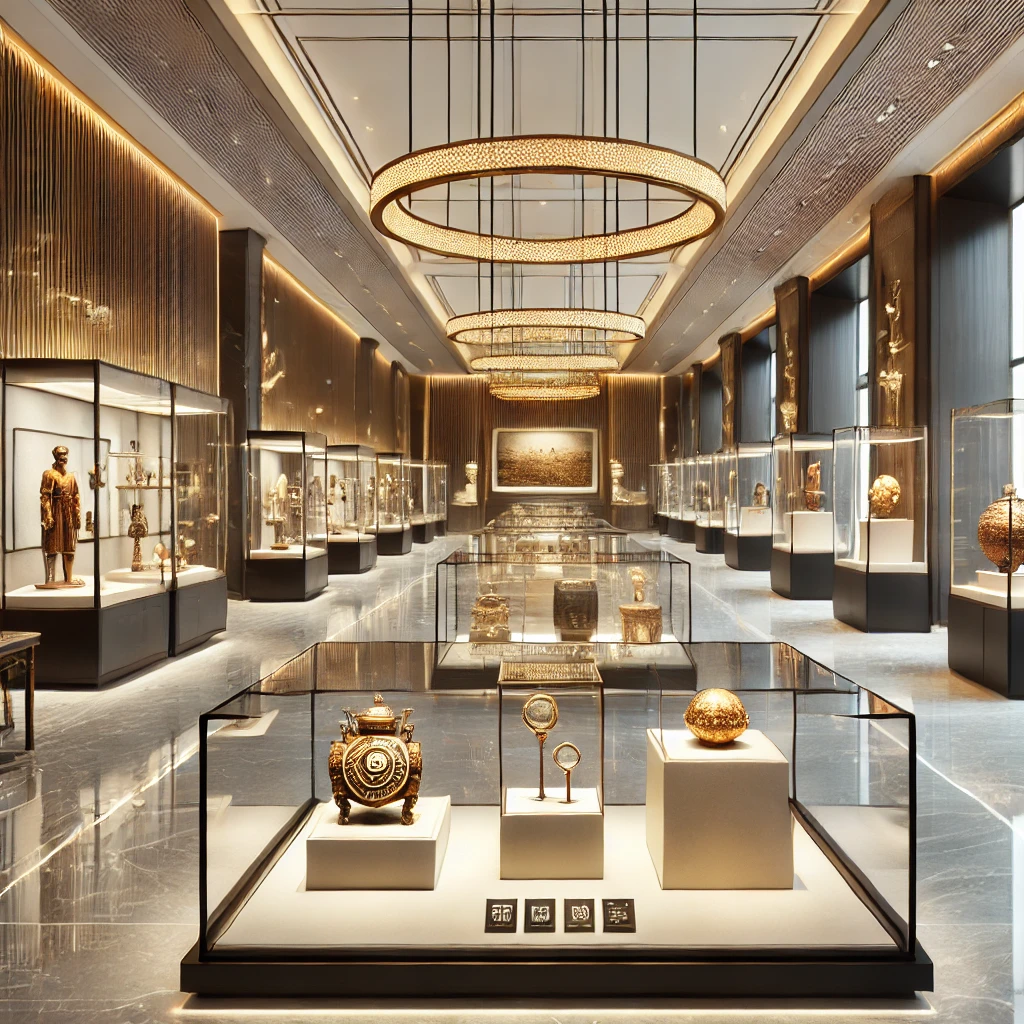Custom museum displays play a crucial role in enhancing the visitor experience and preserving valuable artifacts. Tailored to meet the specific needs of each exhibit, custom displays ensure that items are showcased in the best possible manner while maintaining high standards of protection. This article explores the benefits, applications, and key considerations of custom museum displays, highlighting their importance in various museum settings.
Benefits of Custom Museum Displays
- Enhanced Visitor Experience
- Engaging Presentation: Custom displays are designed to create immersive and engaging experiences for visitors, making the exhibits more interesting and informative.
- Clear Visibility: With tailored lighting and anti-reflective glass, custom displays ensure that artifacts are clearly visible from all angles, enhancing the overall viewing experience.
- Artifact Preservation
- Environmental Control: Custom displays often include features such as temperature and humidity control, protecting sensitive artifacts from environmental damage.
- Security: High-quality materials and advanced locking mechanisms ensure the security of valuable items, preventing theft and unauthorized access.
- Versatility
- Adaptability: Custom displays can be designed to accommodate a wide range of artifacts, from small jewelry pieces to large sculptures.
- Aesthetic Integration: These displays can be tailored to match the aesthetic of the museum, ensuring a cohesive and visually appealing exhibit.
- Educational Value
- Informative Design: Custom displays can include interactive elements and detailed information panels, providing educational content that enhances visitor understanding of the exhibits.
- Multimedia Integration: The incorporation of multimedia elements such as touch screens and audio guides can provide additional context and information about the artifacts on display.
Key Applications of Custom Museum Displays
- Historical Exhibits
- Artifacts and Relics: Custom displays protect and showcase historical artifacts and relics, providing visitors with a glimpse into the past.
- Period Rooms: Recreating historical settings, custom displays help transport visitors to different eras, offering an immersive experience.
- Art Exhibits
- Paintings and Sculptures: Tailored displays ensure that artworks are presented in the best light, with appropriate framing, lighting, and security measures.
- Multimedia Art: Custom displays can accommodate modern and multimedia art forms, providing the necessary infrastructure for digital installations and interactive exhibits.
- Science and Natural History Exhibits
- Specimens and Fossils: Custom displays protect and present scientific specimens and fossils, ensuring their preservation while making them accessible for educational purposes.
- Interactive Exhibits: Designed to engage visitors, custom displays in science museums often include interactive elements that explain complex concepts in an understandable way.
- Cultural and Ethnographic Exhibits
- Cultural Artifacts: Custom displays highlight the significance of cultural artifacts, preserving them and providing context about their origins and uses.
- Ethnographic Collections: These displays can accommodate diverse items, from textiles and clothing to tools and ceremonial objects, showcasing the richness of different cultures.
Key Considerations When Designing Custom Museum Displays
- Artifact Requirements
- Size and Weight: Ensure the display can accommodate the size and weight of the artifacts, providing adequate support and space.
- Environmental Sensitivity: Consider the environmental needs of the artifacts, such as temperature, humidity, and light exposure, and incorporate necessary controls.
- Security and Accessibility
- Protection: Use high-quality materials and advanced locking systems to protect valuable and fragile artifacts.
- Accessibility: Ensure that displays are accessible to all visitors, including those with disabilities, by incorporating features such as adjustable heights and interactive elements.
- Aesthetic and Design
- Visual Appeal: Design displays that complement the artifacts and the overall aesthetic of the museum, enhancing the visual appeal of the exhibits.
- Customization: Work with designers to create displays that meet specific needs, ensuring a perfect fit for the artifacts and the exhibit space.
- Educational and Interactive Elements
- Information Panels: Include detailed information panels that provide context and enhance visitor understanding of the exhibits.
- Interactive Features: Incorporate interactive features such as touch screens, audio guides, and hands-on activities to engage visitors and provide a richer learning experience.
- Durability and Maintenance
- Material Quality: Use durable materials that can withstand the demands of a public space and require minimal maintenance.
- Ease of Maintenance: Design displays for easy maintenance, allowing for quick cleaning and repairs without compromising the integrity of the exhibit.
Leading Providers of Custom Museum Displays
- Goppion
- Overview: Goppion is known for its high-quality museum display cases, combining Italian craftsmanship with innovative design.
- Projects: They have provided custom displays for prestigious institutions like the Louvre and the British Museum.
- Features: Their displays include advanced environmental controls and security features to protect valuable artifacts.
- Meyvaert
- Overview: Meyvaert specializes in creating bespoke museum displays that focus on innovation and quality.
- Product Range: They offer a variety of display cases, including wall cases, freestanding cases, and modular systems.
- Sustainability: Meyvaert emphasizes sustainable manufacturing practices and eco-friendly materials.
- Zone Display Cases
- Overview: Zone Display Cases provides customized solutions for museums and exhibitions worldwide.
- Customization: They offer highly customizable display cases tailored to specific exhibit requirements.
- Experience: With over 30 years of experience, Zone Display Cases is known for its quality and service.
- Click Netherfield
- Overview: Click Netherfield is a leading manufacturer of museum display cases, known for their innovative designs and high standards.
- Wide Range: They offer a diverse range of display cases, including conservation cases and modular display systems.
- Clientele: Their clients include top museums and galleries around the world, such as the National Gallery of Art in Washington, D.C.
- Rothstein Display
- Overview: Rothstein Display provides premium display solutions for museums, focusing on craftsmanship and durability.
- Product Variety: They offer various display case designs, including glass cases, pedestals, and archival storage solutions.
- Quality Assurance: Rothstein Display is known for its meticulous quality control and attention to detail.
Conclusion
Custom museum displays are essential for enhancing visitor experience and preserving valuable artifacts. By focusing on key design elements, security features, and educational content, museums can create engaging and informative exhibits that captivate visitors. Leading providers like Goppion, Meyvaert, Zone Display Cases, Click Netherfield, and Rothstein Display offer high-quality, customizable solutions that meet the specific needs of various museum settings. Investing in custom displays ensures that artifacts are showcased beautifully and protected for future generations to enjoy.









